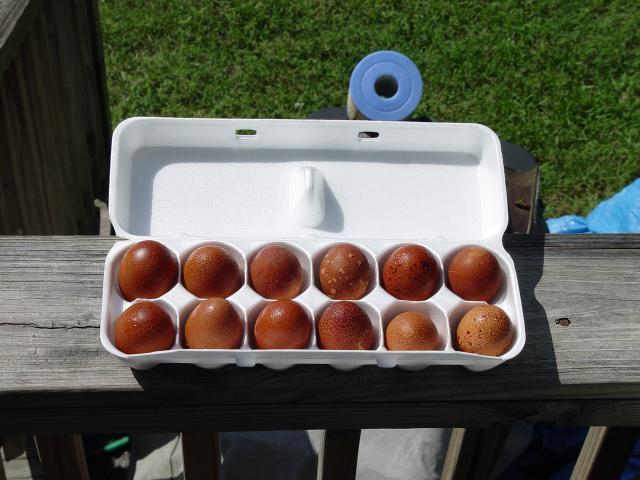- Jan 29, 2010
- 507
- 3
- 186
Quote:
Violet~ He looks to be a wheaten cockerel....see the cinnamomy brown wing triangle (@ the bottom of the wing) that says wheaton to me.
Thank you! That is great! That is what he should be, but the trio we bought had two that look like him and one light brown one. We figured the breeder mixed up what the male and female chicks are supposed to look like. Then the one light colored one that we figured must be the wheaten pullet developed blue legs and ear tufts, and we said uh oh?!
He has just started getting the red/ cinnamon coloring really coming out on his back, and getting the longer neck feathers, I think he is a late bloomer. Do Marans tend to develop slower than other breeds?
I wondered if he could be a black copper, then the blue coloring came out on his underside, and more red on his back, so I thought maybe a blue copper, but I just dont know the subtleties between the different colors, reading the standards doesn't really help me I am too new at this!
I am getting a half dozen Marans hatching eggs this weekend, I love all the colors, wheaten is one of my favorites though so I am happy!
His name is Marshmallow, he likes to get underneath his two pullet friends to sleep and get out of the rain. He doesnt act very rooish yet!
Violet~ He looks to be a wheaten cockerel....see the cinnamomy brown wing triangle (@ the bottom of the wing) that says wheaton to me.
Thank you! That is great! That is what he should be, but the trio we bought had two that look like him and one light brown one. We figured the breeder mixed up what the male and female chicks are supposed to look like. Then the one light colored one that we figured must be the wheaten pullet developed blue legs and ear tufts, and we said uh oh?!
He has just started getting the red/ cinnamon coloring really coming out on his back, and getting the longer neck feathers, I think he is a late bloomer. Do Marans tend to develop slower than other breeds?
I wondered if he could be a black copper, then the blue coloring came out on his underside, and more red on his back, so I thought maybe a blue copper, but I just dont know the subtleties between the different colors, reading the standards doesn't really help me I am too new at this!
I am getting a half dozen Marans hatching eggs this weekend, I love all the colors, wheaten is one of my favorites though so I am happy!
His name is Marshmallow, he likes to get underneath his two pullet friends to sleep and get out of the rain. He doesnt act very rooish yet!



